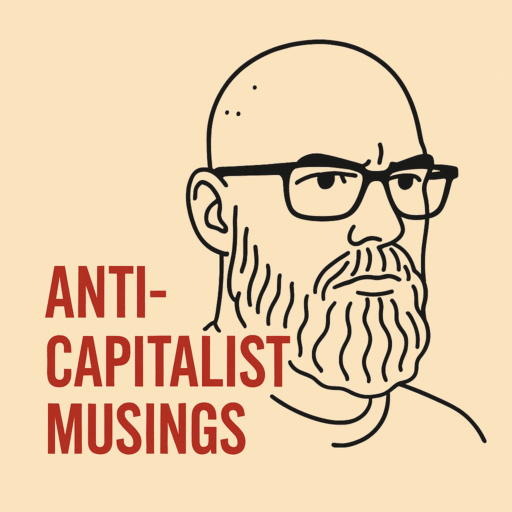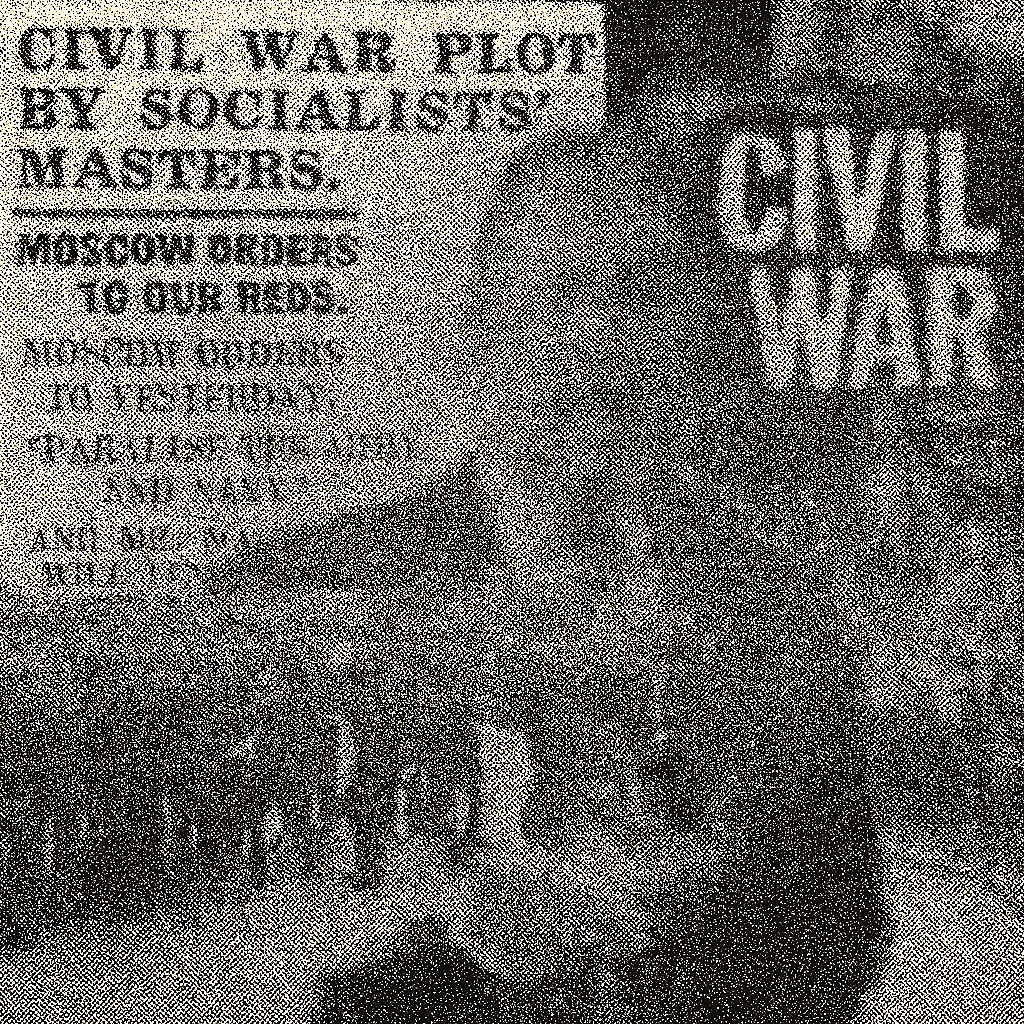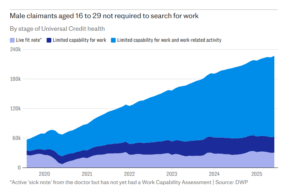Why this, why now
I started thinking seriously about this after reading Phil Tinline’s New Statesman piece, Visions of an English Civil War. It is a brisk and elegant history of “on the brink” moments in Britain over the past century. From the 1914 Ulster Covenant gun clubs drilling in Glasgow and Liverpool; the forged Zinoviev Letter in 1924; Enoch Powell’s “rivers of blood” in the 1960s; Christopher Priest’s fevered refugee-fuelled dystopia in the 1970s; and the miners’ strike of 1984–85 remembered by many as a civil war in all but name.
Tinline’s survey reminds us that, for all the rhetoric, Britain has not, in living memory, crossed that threshold into actual sustained internal warfare. Yet the imagery returns again and again, like a family heirloom dragged out whenever the dominant class feels genuinely threatened. We are living through one such moment: Elon Musk declaring Britain’s collapse “inevitable”; Dominic Cummings musing about “widespread white-English mobs” finding their political entrepreneur; David Betz1, professor of war in the modern world, assigning a one-in-five chance to civil conflict by 2029.
From the left, the task is not to weigh the odds but to ask why these visions persist, why they are so often wrong in their specifics but enduring in their form, and whose political purposes they serve. A civil war fantasy is never simply a forecast; it is a piece of political work. It shapes the terms of debate, narrows the imaginable solutions, and conditions the public to accept the erosion of liberties in the name of “security”.
Civil war as dominant-class reflex
One of the striking patterns in Tinline’s account is the timing. Civil war talk doesn’t emerge in periods of stasis; it erupts when the dominant class sees the possibility (even faint) of a change in the balance of power.
In 1912, almost a quarter of a million men in Ulster signed a covenant to resist Home Rule “by all means which may be found necessary”. They meant it. Gun-running was organised; drilling was open; the British Army’s willingness to enforce the law was uncertain. By 1914, the “British Covenant” on the mainland had hundreds of thousands of signatures. The slogan on its journal’s masthead was telling: “Put your trust in God and keep your powder dry.” The outbreak of the First World War interrupted what Dan Jackson2 calls an “arguable” verge of civil war, but the conditions were set: a political crisis reframed as an existential conflict, volunteer armies preparing for battle, and a government either unable or unwilling to enforce its own reforms.
After the Great War, the reflex was deployed against labour. In 1921, with the Triple Alliance of miners, railwaymen and transport workers preparing to strike, David Lloyd George told the Commons the situation was “analogous to civil war” and proposed a “civil defence force” to protect volunteers sent to break it. Within a week, 70,000 had enlisted. This was not about defending the realm against invasion; it was about defending capital against organised labour.
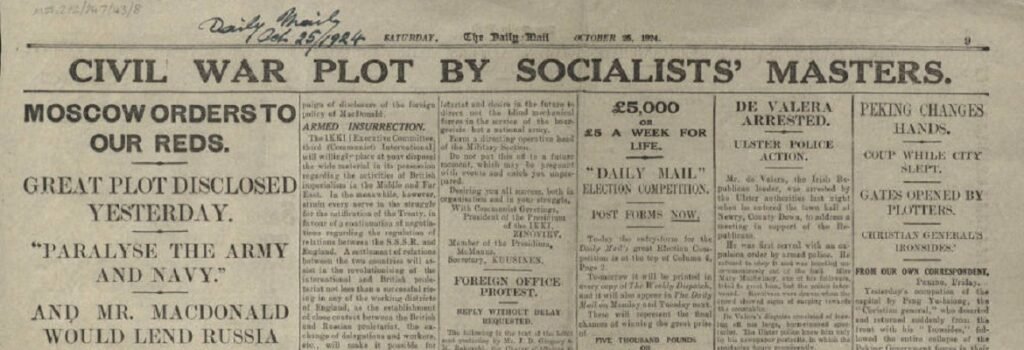
The 1924 Zinoviev Letter (a forgery, likely by MI6 or its friends) worked in the same way. The Daily Mail splashed “Civil War Plot by Socialists’ Masters” across its front page. The accusation was absurd, but it resonated because it took place against a background of militant unions, Soviet prestige, and a Labour government suspected by the establishment of being a stalking horse for Bolshevism.
Fast-forward to the 1970s and the script repeats. Inflation runs at 20 per cent; wildcat strikes multiply; Edward Heath calls an election on “Who Governs Britain?” Retired SAS founder David Stirling is sketching plans to helicopter a private army (GB75) over picket lines and seize back worker-occupied factories. The Conservatives’ own contingency plans, when leaked to The Economist, are headlined “Appomattox or civil war?” It is hard to overstate how telling that Confederate analogy is: it places the state as the Union, fighting to preserve “order”, with its internal enemy framed as illegitimate rebels.
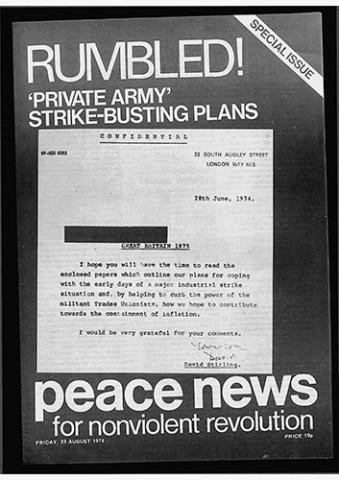
The reflex is clear: when political contestation threatens, recode it as chaos. Once you label an industrial dispute or a demand for self-determination as a prelude to civil war, you can justify almost anything in response.
The racialisation of collapse
When the balance of industrial power shifted decisively against labour in the 1980s, the “civil war” narrative did not disappear; it mutated. The threat was no longer the miner or the shop steward; it was the migrant and the multicultural city.
Enoch Powell’s “rivers of blood” speech in April 1968 is the most obvious pivot point. His imagined racial war was grounded in the words of a middle-aged constituent: “In 15 or 20 years’ time, the black man will have the whip hand over the white man.” Powell claimed this was the reason to halt immigration and encourage “re-emigration”. He cast this as the last chance to avert violent collapse. Even some of his Cabinet critics thought the war he conjured might prove inevitable. Barbara Castle called it “help[ing] to make a race war inevitable3”; James Callaghan feared a return to the sectarian strife of the 17th century.
In the 1970s, the scenario was given fictional shape. Christopher Priest’s Fugue for a Darkening Island imagines a England in which an authoritarian nationalist wins power as African refugees arrive in the Thames by the boatload. Society splits into pro- and anti-deportation camps, rural “secure zones” and feral cities, barricaded enclaves and armed roadblocks. If the echoes with today’s David Betz forecasts are uncanny, it’s because the template hasn’t changed: depict the city as lost to “foreign occupation” and the countryside as the last bastion of the “indigenous” people.

By shifting the civil war frame onto race, the right preserved its utility while replacing the enemy. Where the miners could be smashed by pit closures and police truncheons, the racialised enemy is endless, permanently replenished by the idea of migration as invasion (by small boat and “fighting aged male”). The advantage is obvious: it ensures the “war” never ends, and thus neither does the licence for repression.
Collapse as cover for authoritarianism
The mechanics are simple and depressingly consistent:
- Prophesy breakdown — urban insurrection, rural revolt, infrastructure sabotage, ethnic war.
- Prescribe extraordinary measures — militarised borders, sweeping police powers, surveillance, the curtailment of protest.
- Keep the prophecy just out of reach, so the measures can be normalised without ever being tested in the crucible of actual war.
Elon Musk’s “civil war in Britain is inevitable” tweet, Dominic Cummings’ musings about “white-English mobs” finding political leaders, Betz’s talk of tens of thousands dead per year, none of these are neutral assessments. They are interventions in the political weather, designed to keep the sense of threat ambient and unresolvable.
Once the frame is set (once Britain is understood as a “tinderbox”) any act of authoritarian consolidation can be sold as insurance. The language becomes the permission structure: pass this law, fund this unit, surveil this group, because without it the unthinkable will happen.
The liberal temptation to echo the script
The most insidious aspect of the “civil war” script is how easily it seeps into the language of the political centre. You don’t have to be a GB News fire-breather or a Reform UK MP to start talking about “tinderboxes” and “powder kegs.” All it takes is the repeated insistence, in think-tank reports, police briefings, and ministerial soundbites, that Britain is somehow perpetually on the brink. The metaphors do the rest.
Lisa Nandy’s remark, quoted by Tinline, that Labour’s northern heartlands could “go up in flames” is a case in point. She almost certainly didn’t intend it as a dog-whistle to the far right, but the imagery is identical: an unstable mass of people, culturally combustible, waiting for a spark. It is language that frames disaffection not as a political problem to be addressed through material change, but as a volatile threat to be managed, or contained.
Starmer’s Labour has already adopted large parts of the Conservative framing on law and order, migration, and public protest. The proscription of Palestine Action as a “terrorist organisation” with over 500 people arrested in a single day, many of them retired teachers, vicars, and doctors, for holding placards, is a stark example. Once you start treating dissent as extremism4, the conceptual leap to treating it as civil war is a short one.
The problem isn’t only the crackdown; it’s the normalisation. The more politicians across the spectrum use the imagery of impending collapse, the more the public becomes acclimatised to the idea that strong, even repressive measures are the “responsible” response. This is how a Labour government ends up legitimising the very narratives the far right feeds on, and in doing so, narrowing the range of imaginable political solutions to the crises we actually face.
The real tinderbox: neoliberal decay
If Britain feels combustible, it is not because of some great moral collapse or an unprecedented wave of migration; it is because forty years of neoliberal restructuring have gutted the institutions and solidarities that make collective life bearable. The slow violence of privatisation, deregulation, and financialisation has been every bit as destructive as the imagined riots of the right’s fever dreams.
Public services, from the NHS to local councils, have been pared down to skeletal form. Entire towns have lost their post offices, libraries, swimming baths, youth clubs. The civic infrastructure that once provided spaces of interaction across class and cultural lines. Wages have stagnated for more than a decade, leaving many working households in a state of permanent insecurity. The housing market has been turned into an asset-stripping racket, with rents rising faster than wages and ownership concentrated in ever fewer hands. Energy, water, and transport are run for profit extraction, not public need.
Dominic Cummings, in one of his rare moments of candour, barely mentions ethnicity when pressed to explain his “civil war” warnings. He talks instead about closed police stations, the impossibility of getting a GP appointment, the cumulative corrosion of trust caused by decades of broken promises. Betz, too, admits that financialisation is “reaching the end of the line.” These are not the preconditions for ethnic civil war; they are the preconditions for a general crisis of legitimacy.
The right’s genius is to recode this collapse in material conditions as a cultural or demographic problem. The NHS backlog is blamed on migrants rather than decades of underfunding. The boarded-up high street is blamed on “woke” councils rather than corporate tax avoidance and online monopolies. The erosion of community life is blamed on multiculturalism rather than the wholesale destruction of municipal infrastructure. This rebranding serves two purposes: it keeps the anger pointed away from capital, and it creates a permanent justification for authoritarian “solutions” that will never solve the underlying crisis.
How “civil war” talk fades
Tinline’s historical sweep is valuable for what it shows about the disappearance (not the arrival) of civil war rhetoric. These moments do not end because the nation “comes to its senses” or because some timeless British moderation asserts itself. They end when the structural conditions that gave the rhetoric purchase are transformed.
After 1945, the post-war settlement blunted elite fears of socialist takeover by conceding much of the social-democratic programme. Full employment, the NHS, council housing, public ownership of utilities: these didn’t abolish class struggle, but they removed the immediate pretext for treating it as an existential threat.
In the 1970s, Powellism was countered not primarily by parliamentary speeches but by everyday anti-racist organising. Community groups, trade union branches, and local campaigns worked to knit together solidarities across lines the far right was desperate to weaponise. This was painstaking work, often invisible to the national press, but it helped deny the “race war” merchants the street-level reality they wanted to provoke.
In the 1980s, Thatcher’s destruction of trade union power was so thorough that the fantasy of sending in the army became redundant. The miners’ defeat in 1985 (and the deliberate closure of pits in the years that followed) was a strategic victory for capital, not a reconciliation. The “war” ended not in compromise but in decisive class defeat.
The lesson is bleak but clear: the disappearance of civil war talk tells you nothing about reconciliation or stability. It tells you which side won the underlying struggle.
The political utility today
For the right, the civil war narrative delivers three enduring benefits. First, it offers a permanent enemy. In the 1920s, it was the militant unions. In the 1960s and 70s, it was migrants and the multicultural city. Today it might be those who arrive by small boat, climate activists, “woke elites”, or pro-Palestine campaigners. The identity of the enemy changes; the structure of the narrative does not.
Second, it provides consent for repression. Every expansion of police powers, every new surveillance capability, every restriction on protest can be sold as a precautionary measure to prevent the unthinkable. Once the idea of an imminent breakdown is embedded, the argument for extraordinary measures is half-won before it’s even made. Just look at Trump’s America.
Third, it offers cover for capital. By blaming potential collapse on cultural or demographic change, the right diverts attention from the actual agents of social breakdown: landlords, privatisers, financiers, and the politicians who enable them. The looting of the public realm disappears from view, replaced by a morality play about defending “our way of life.”
The political centre, meanwhile, finds its own uses for the narrative. By adopting the language of “order” and “stability” in a supposedly volatile society, it can pose as the responsible custodian of the state. This posture allows it to avoid redistributive politics entirely: if the problem is instability itself, then the solution is managerial competence, not the dismantling of the economic order that generates the instability.
What the left must do
The easy move is to dismiss these scenarios as paranoid fantasy, the preserve of Telegraph columnists and YouTubers trying to frighten pensioners into mailing cheques. But that would be a mistake. The fantasies endure because they speak, however inaccurately, to real experiences of social fracture and decline.
Britain is in the midst of a prolonged internal conflict, but it is not over skin colour or national origin. It is over the ownership and control of the country’s wealth, resources, and democratic life. The left’s task is to name the antagonists correctly. To point not at the migrant nurse or the teenager in a hijab, but at the billionaire landlord, the hedge fund asset-stripper, the private equity firm siphoning money out of care homes.
We must refuse the racial coding of social crisis. The NHS waiting list is not the fault of immigration; it is the result of underfunding and outsourcing. The collapse of public transport is not due to cultural change; it is the result of privatisation and profit extraction. By insisting on the economic roots of these crises, we can cut through the right’s attempt to turn them into cultural or ethnic battlefields.
We must offer a vision of stability rooted in material security: redistribution of wealth, public ownership of essential services, democratic control over the economy. Stability without justice is simply the security of the prison yard.
Refuse their prophecy
The right’s “coming civil war” is not a weather forecast; it is a story Every time it is revived, the plot is the same: declare an existential threat, build the apparatus to counter it, and keep the threat just far enough away that the apparatus can be made permanent.
If the left allows this to dominate the political imagination, all available futures will be shades of authoritarianism. The work, then, is twofold: to dismantle the apparatus where it already exists, and to rewrite the script entirely.
The only war worth fighting is against the system that has left Britain permanently on the brink. Not of ethnic conflict, but of economic collapse and social exhaustion. That war is already being fought, piecemeal, in picket lines, tenants’ meetings, food bank warehouses, and courtrooms where campaigners defend themselves against spurious charges. The choice is whether we treat these as isolated skirmishes, or whether we understand them for what they are: the frontlines of a struggle for a country in which “civil war” is no longer a useful story for those in power to tell.
FOOTNOTES
- David Betz, interview by Louise Perry, Maiden, Mother, Matriarch, February 2025. Betz is Professor of War in the Modern World, Department of War Studies, King’s College London. The interview went viral after Betz argued that “civil conflict in the West” is “practically inevitable” and that Britain may well be the first, with a one-in-five chance of such conflict beginning by 2029 ↩︎
- Dan Jackson is a British historian and author best known for The Northumbrians: North-East England and Its People – A New History (2019), which explores the culture, politics, and history of the North East from the Romans to the present. ↩︎
- Barbara Castle, The Castle Diaries 1964–1970 (London: Weidenfeld and Nicolson, 1980), entry for 22 April 1968, p. 429. ↩︎
- Peter Hain was among a small group of Labour peers in the House of Lords, alongside Labour peers John Hendy and Frances O’Grady who opposed the government’s July 2025 order proscribing Palestine Action as a terrorist organisation. Hain has said the government is “digging itself into a hole,” warning that proscribing the group risks equating peaceful activists with terrorists ↩︎
